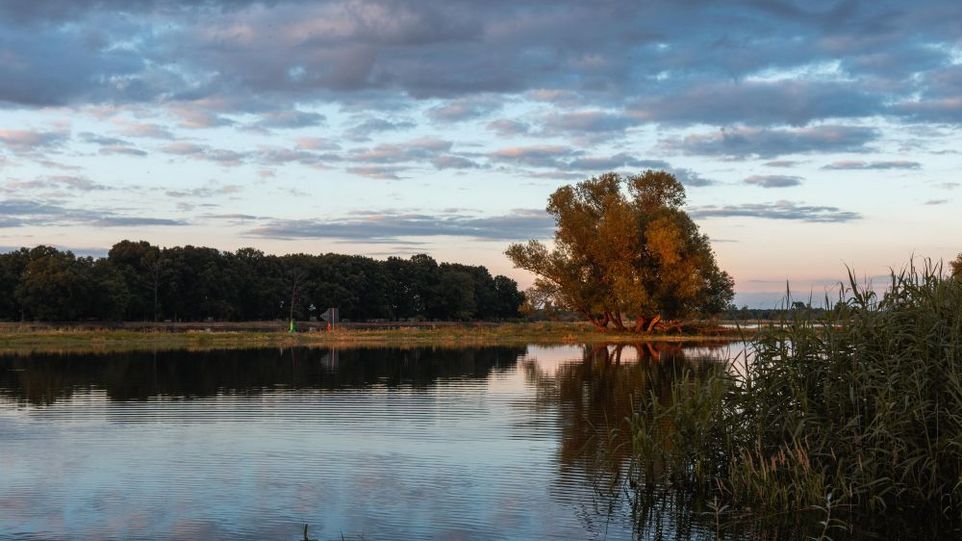
Lessons learned?

The man-made environmental disaster has caused severe damage to the Oder ecosystem. Scientists have summarised what needs to be done to ensure the recovery and sustainable use of the river.
09/14/2022 · News · Leibniz-Institut für Gewässerökologie und Binnenfischerei · Umweltwissenschaften · Forschungsergebnis
The man-made environmental disaster, resulting in masses of dead fish, mussels and snails, has caused severe damage to the Oder ecosystem. What can now be done to help the river – and how can the risk of such major ecological and economic damage be reduced in the future? The Leibniz Institute of Freshwater Ecology and Inland Fisheries (IGB) has today published its recommendations in an IGB Policy Brief. The IGB, Germany’s largest freshwater research centre, has been working on the Oder for decades. By conducting its own independent investigations into the fish kill, the institute played a role in determining the causes of the disaster. Now the scientists have summarised what needs to be done from an environmental perspective to ensure the recovery and sustainable use of the river.
The detailed analysis of the Oder disaster is still ongoing. However, IGB has been able to show that it was not a natural phenomenon, but a man-made problem: the mass development of the toxic brackish water alga Prymnesium parvum was the main culprit. Excessive salt concentrations due to industrial discharges had created an artificial habitat for this alga. "In the River Oder, the toxin-producing brackish water alga Prymnesium parvum proliferated to an extent as never before observed in our waters, to my knowledge," explained algae expert Jan Köhler. High nutrient concentrations in the water (likewise caused by anthropogenic inputs), high water temperatures, partial damming and low water flow in the River Oder owing to a prolonged period of drought also provided ideal conditions for its growth.
The toxin produced by the alga led to the mass mortality in fish, mussels and water snails in August. Now the biomass of the perished animals is being decomposed by bacteria. This process can lead to extreme lack of oxygen, in turn causing additional fish mortality downstream, as can now be observed in various sections of the River Oder and its backwaters.
Nature-based solutions: reduce stress factors and put a stop to river engineering works
The environmental disaster occurred as a result of several stress factors, all of which were caused by human activity. These stress factors also had such a disastrous effect on the Oder because previous development measures had reduced the river’s natural resilience to hydrological and climate change. "We see the River Oder disaster as a multicausal, man-made event. There have been frequent occurrences of increased salinity due to industrial pollution in the upper reaches of the Oder in the past, without resulting in such massive algal blooms. But the general conditions now seem to have changed. If salt levels do not decrease and we continue to experience excessively hot and dry summers due to climate change, such mass developments of toxic algae could occur again in the future," said IGB scientist Tobias Goldhammer.
In the wake of the River Oder disaster, it is therefore crucial from a scientific perspective to protect and restore the river and its remaining near-natural habitats – instead of implementing further regulation of the river by means of additional river engineering measures. In 2020, IGB had already warned of the ecological risks of developing the Oder in a previous IGB Policy Brief.
Now IGB researchers are once again recommending a review of the infrastructure project on both sides of the river. In addition, further measures should be taken to stabilise the Oder’s ecosystem and ensure its sustainable use in the future. "The future of the River Oder and its wildlife will depend on whether policymakers and authorities decide to enhance the natural resilience of the ecosystem," emphasised IGB biologist Jörn Geßner. Christian Wolter, fish ecologist at IGB, agreed that restoration is the best way to prevent crisis: "Besides being an essential basis for mankind’s existence, intact riverine landscapes are centres of biodiversity." And he underlined: "To promote their resilience and adaptation to climate change, natural processes for flood protection and water retention in the landscape must be revitalised, and interventions reduced or mitigated wherever possible."
The scientists formulate the following six research-based recommendations for action, explained in greater detail in the latest IGB Policy Brief:
- River engineering works to deepen or regulate the Oder should be discontinued
- Emissions should be reduced through lower threshold values and restricted cooling water use
- The main river should be restored and reconnected to its backwaters
- There should be no stocking with non-native fish
- Internationally coordinated water management should be intensified
- A digital monitoring system with freely accessible data should be expanded
Original publication
IGB Policy Brief „Die Zukunft der Oder: Forschungsbasierte Handlungsempfehlungen nach der menschengemachten Umweltkatastrophe“
Further information and contact
Press release - Leibniz Institute of Freshwater Ecology and Inland Fisheries (IGB)